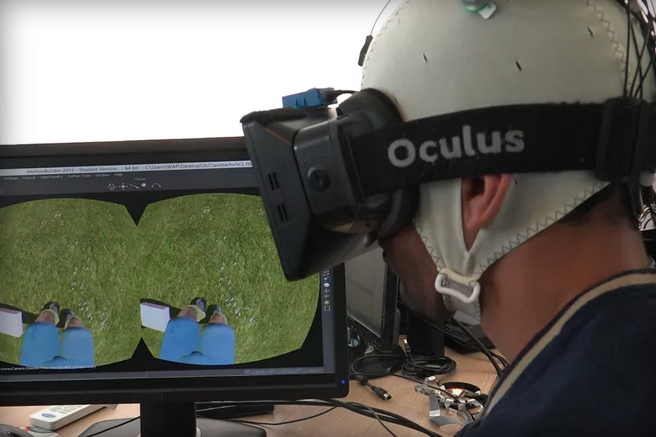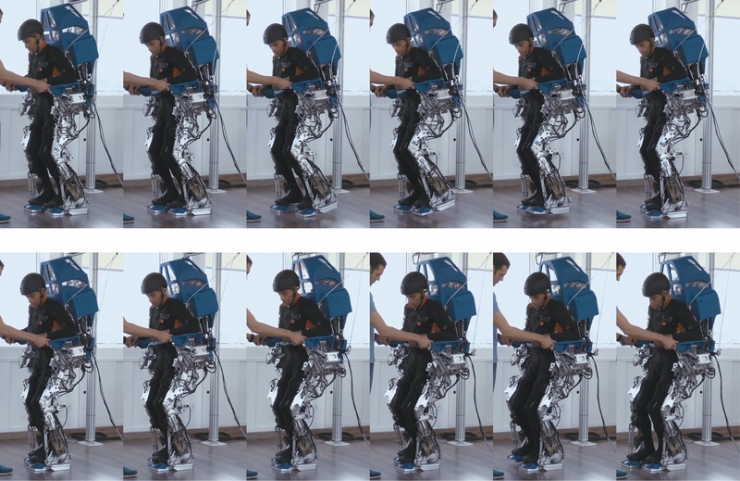
(Source: the verge)
In people's traditional beliefs, a patient who was diagnosed as being paralysed because of a spinal cord injury is considered to have been sentenced to “a death sentence that can never be continuedâ€. However, with the advancement of science and technology, especially the emergence and spread of emerging technologies such as VR, the fate of paralyzed patients who can no longer walk may be broken.
According to the verge report, the combination of an enhanced wearable assist device and virtual reality technology may help the blind person to regain the sense of touch and control some of the leg muscles.
Recently, a study was published in Scientific Reports. The study focused on how this treatment affects eight patients with lower body paralysis.
In the one-year study, the researchers tracked how the eight patients with chronic spinal cord injuries treated the 12-month VR training session and how they responded. Among them, 6 men and 2 women who participated in the treatment were completely paralyzed patients with lower extremities. After receiving 12 months of VR training, the condition was improved to varying degrees.

(Source: the verge)
During the course of the study, participants used a mechanical exoskeleton controlled by the brain and placed themselves in a virtual reality environment. The treatment plan mainly includes three parts:
First, each patient was equipped with a virtual reality headset and an electroencephalogram cap to measure brainwave activity and connected a vibrotactile feedback device to the forearm. The task of the patient is to move his body to the head of a football player through imagination. Put yourself in a stadium in virtual reality. The study report said that this can activate the area of ​​the patient's brain in association with leg movements.
In the second phase, the patient was placed on a treadmill and wore a mechanical exoskeleton device that automatically moved their legs for them.
The third stage is to combine the first two steps. Place the patient in another machine exoskeleton device and let them move their legs in a similar way in the virtual reality environment by controlling the "brain" of the football player.
It is understood that not many patients participated in this study, and each person was diagnosed with a lower body paralysis ranging from 3 to 13 years. Of the 8 patients who participated in the study, 7 were completely paralyzed below the spinal cord.
The study aims to test how effective the use of these technologies is in helping patients with chronic injuries recover. The results of the study found that almost all patients experienced improvement in their perceptions, such as improved cardiovascular function, improved bladder and bowel control capabilities, and tactile sensations, temperature changes and pain, and pressure perception. The report also pointed out that the somatosensory nervous system also improved in all eight patients.
The report pointed out that in the patient's EMG, patients with sub-spinal damage regained control of certain key muscles and their walking indicators were significantly improved.
Half of the patients have changed from full to partial. Among them, a female patient could not even stand on the stand at the beginning of the experiment, but after 10 months of rehabilitation training, some patients could walk again with the help of a walking aid, a stent and a therapist.
Researchers believe that this significant clinical treatment may be closely related to the use of brain-computer interfaces that can restore lower body movements in the virtual reality environment for a long time and often. The researchers said that this may give people a new kind of inspiration - brain-computer interface should be used as a new method of rehabilitation of the nervous system.
Similarly, the researchers also stated that in order for these paralyzed patients with spinal injuries to stand up again, even walking on their own, humans still need to make further attempts and efforts.
Perhaps with the help of VR technology, the desire to regain walking ability is no longer just a luxury.
Via the verge
Perkins 21-75KW Diesel Generator
Perkins 21-75Kw Diesel Generator,Perkins Generator,Standby Diesel Generator,Canopy Diesel Generator
Shanghai Kosta Electric Co., Ltd. , https://www.generatorkosta.com
